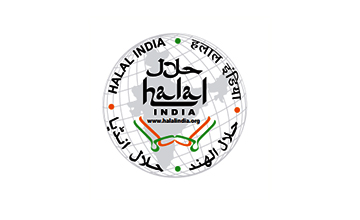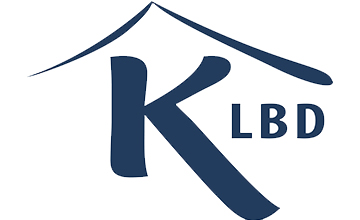Mercury Flue Gas
.jpg)
Caring for Your Chimneys & Flues When gas and oil are burned for heat, the dangerous fumes produced range from soot (particulate matter), to nitrogen dioxide (also toxic, to acidic water vapors formed when moisture condenses. None of these pollutants should be allowed to leak from the chimney into your living space. Due to its adverse impact on health, as well as its global distribution, long atmospheric lifetime, and propensity for deposition in the aquatic environment and in living tissue, the US Environmental Protection Agency (US EPA) has classified mercury and its compounds as a severe air quality threat. Such widespread presence of mercury in the environment originates from both natural and anthropogenic sources.
Mercury in the flue gas from waste incineration is predominantly in the vapor phase at temperatures down to 140 °C. Only a small portion of the mercury is metallic Hg°, most of it is oxidized, which has a high vapor pressure at these gas temperatures.
Oxidized mercury is absorbed by fly ash and will be captured on fabric filters. By injecting fly ash and lime before a fabric filter a high degree of collection can be achieved, both for hydrochloric acid and for mercury.
Up to 90% of the mercury can become attached to the dust. By optimizing the operation and with efficient dust removal it is therefore possible to limit mercury emissions to less than 0.3 g ton−1 of incinerated waste.
Mercury Removal
Mercury emissions from coal-fired generators, cement kilns, industrial boilers, waste incinerators, and steel mills are a serious environmental concern due to the toxicity and persistence of mercury that creates air pollution and accumulates in our waterways. In response to these concerns, regulatory agencies in the United States, Canada, and now Europe continue to introduce stricter regulations to limit these mercury emissions.
Mercury is one of the rarest elements in nature. However, due to its high vapor pressure and easy dissolubility from chemical compounds, the danger of emissions to the environment is present in many industrial processes. Due to the high toxicity of mercury and its compounds, every possible effort should be undertaken to prevent such emissions. Possible sources of mercury emissions to the atmosphere are metallurgical processes and the production and disposal of products containing mercury. Mercury can be removed from gas flows using different washing processes. Adsorption on activated carbon PARASORB™ brand from Kalimati Carbon results in a removal efficiency of 98 %. Flue Gas Cleaning
Reachable emission values:
Dioxin/Furan: < 0,1 ng / Nm³
Quecksilber: < 0,05 mg / Nm
Personal Protective Equipment
Due to excellent adsorption characteristics for a range of toxic and harmful gases, activated carbon has been used in personal protective equipment for several years.
Kalimati Carbon, having a manufacturing unit in the heart of the coconut-producing region in Tamil Nadu, India manufactures coconut shell-activated carbon for personal, industrial & military applications. Kalimati has an in-house impregnation set up which enables us to cater to applications requiring special removal through chemisorption, by impregnating activated carbon with selected metal oxides.
Personal & Collective Protection
Activated Carbon filters can be loaded in face masks which can be used for various breathing protection-related applications ranging from airborne pollutants to NIOSH gases, organic vapors, acidic/basic gases, etc. in ambient, academic, hospital, airport & nonindustrial establishments.
Activated carbon is the principal means of protection against chemical warfare agents in civilian applications. Kalimati provides numerous specially impregnated grades in full compliance with current civil defense regulations, all predicated on chromium-free formulations. Applications include individual respirator devices and collective protection systems for vehicles and shelters.
Industrial Applications
Industrial workers are often exposed to toxic environments, where they must be protected from chemicals, biologics & radioactive materials as health effects due to toxic industrial chemicals become regulated by governments across the globe.
Kalimati provides respirators to be used for protection against a multitude of industrial chemicals such as organics vapors, carbon tetrachloride, ammonia, mercury, phosgene, chlorine, cyclohexane, methylamine, formaldehyde, phosphene, dimethyl methyl phosphonate, nitrogen dioxide, sulfur dioxide, hydrogen sulfide, hydrogen chloride, etc.
Kalimati Carbon provides a variety of specialty carbon manufacturers with coconut, coal, or wood tailored to the specific requirements of industrial workers.
Military & Nuclear Applications
Modern warfare techniques can involve any chemical, biological, radiological & nuclear gaseous (CBRN) agents being used to target the enemy. Military personnel is required to wear full-proof gas masks equipped with customized high-quality activated carbon cartridges that can filter out such harmful agents. Therefore, high-grade military masks are designed to protect against the majority of warfare gases, blood agents, nerve agents, and other CBRN agents.
With a portfolio of over 50 impregnated carbons, Kalimati provides many different formats of products that are used in various aspects of the personal protection market. Our carbons are NIOSH, CEN, HSE, and OSHA compliant.
A full range of products within our Imprecarb™ brand can meet every challenge for military, collective, industrial, and nuclear applications


.jpg)
.jpg)
